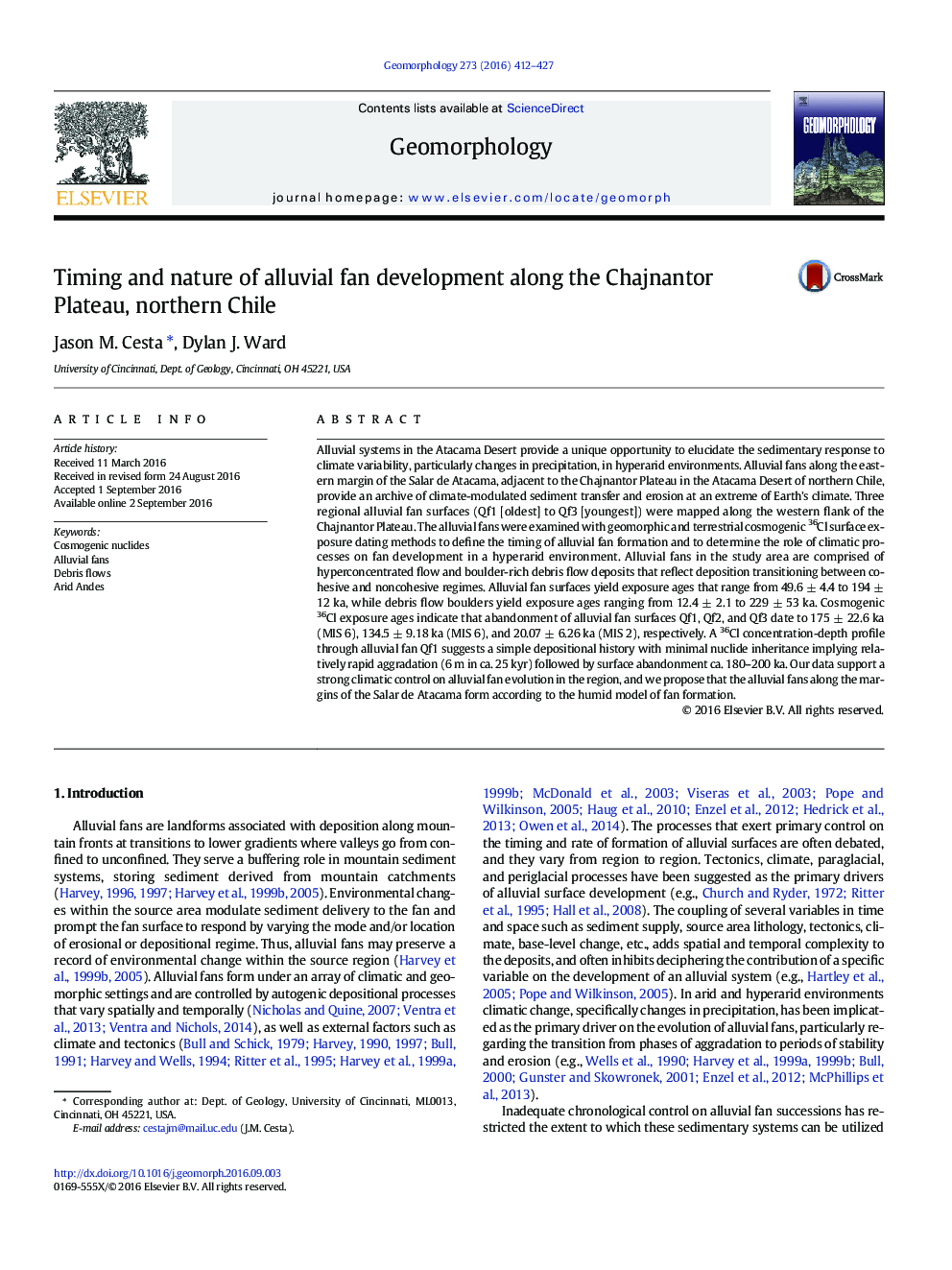| کد مقاله | کد نشریه | سال انتشار | مقاله انگلیسی | نسخه تمام متن |
|---|---|---|---|---|
| 6431598 | 1635376 | 2016 | 16 صفحه PDF | دانلود رایگان |

- Chronostratigraphic study of alluvial fans adjacent to the Salar de Atacama
- Alluvial fan surfaces and debris flow boulders were dated with cosmogenic 36Cl.
- 36Cl depth profile measured to investigate erosion and nuclide inheritance issues
- Fan surfaces were abandoned by 175 ± 22.6 ka, 134.5 ± 9.18 ka, and 20.07 ± 6.26 ka.
- Alluvial fan formation along the Chajnantor Plateau is modulated by climate.
Alluvial systems in the Atacama Desert provide a unique opportunity to elucidate the sedimentary response to climate variability, particularly changes in precipitation, in hyperarid environments. Alluvial fans along the eastern margin of the Salar de Atacama, adjacent to the Chajnantor Plateau in the Atacama Desert of northern Chile, provide an archive of climate-modulated sediment transfer and erosion at an extreme of Earth's climate. Three regional alluvial fan surfaces (Qf1 [oldest] to Qf3 [youngest]) were mapped along the western flank of the Chajnantor Plateau. The alluvial fans were examined with geomorphic and terrestrial cosmogenic 36Cl surface exposure dating methods to define the timing of alluvial fan formation and to determine the role of climatic processes on fan development in a hyperarid environment. Alluvial fans in the study area are comprised of hyperconcentrated flow and boulder-rich debris flow deposits that reflect deposition transitioning between cohesive and noncohesive regimes. Alluvial fan surfaces yield exposure ages that range from 49.6 ± 4.4 to 194 ± 12 ka, while debris flow boulders yield exposure ages ranging from 12.4 ± 2.1 to 229 ± 53 ka. Cosmogenic 36Cl exposure ages indicate that abandonment of alluvial fan surfaces Qf1, Qf2, and Qf3 date to 175 ± 22.6 ka (MIS 6), 134.5 ± 9.18 ka (MIS 6), and 20.07 ± 6.26 ka (MIS 2), respectively. A 36Cl concentration-depth profile through alluvial fan Qf1 suggests a simple depositional history with minimal nuclide inheritance implying relatively rapid aggradation (6 m in ca. 25 kyr) followed by surface abandonment ca. 180-200 ka. Our data support a strong climatic control on alluvial fan evolution in the region, and we propose that the alluvial fans along the margins of the Salar de Atacama form according to the humid model of fan formation.
Journal: Geomorphology - Volume 273, 15 November 2016, Pages 412-427